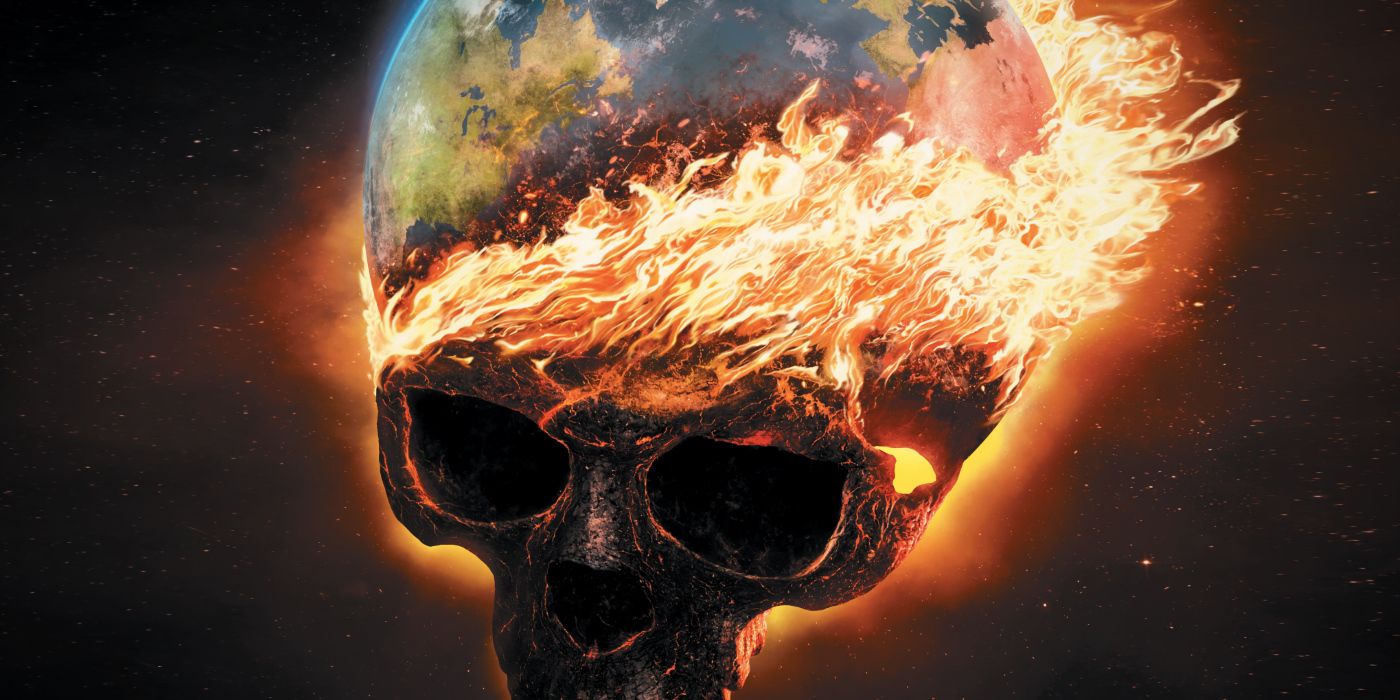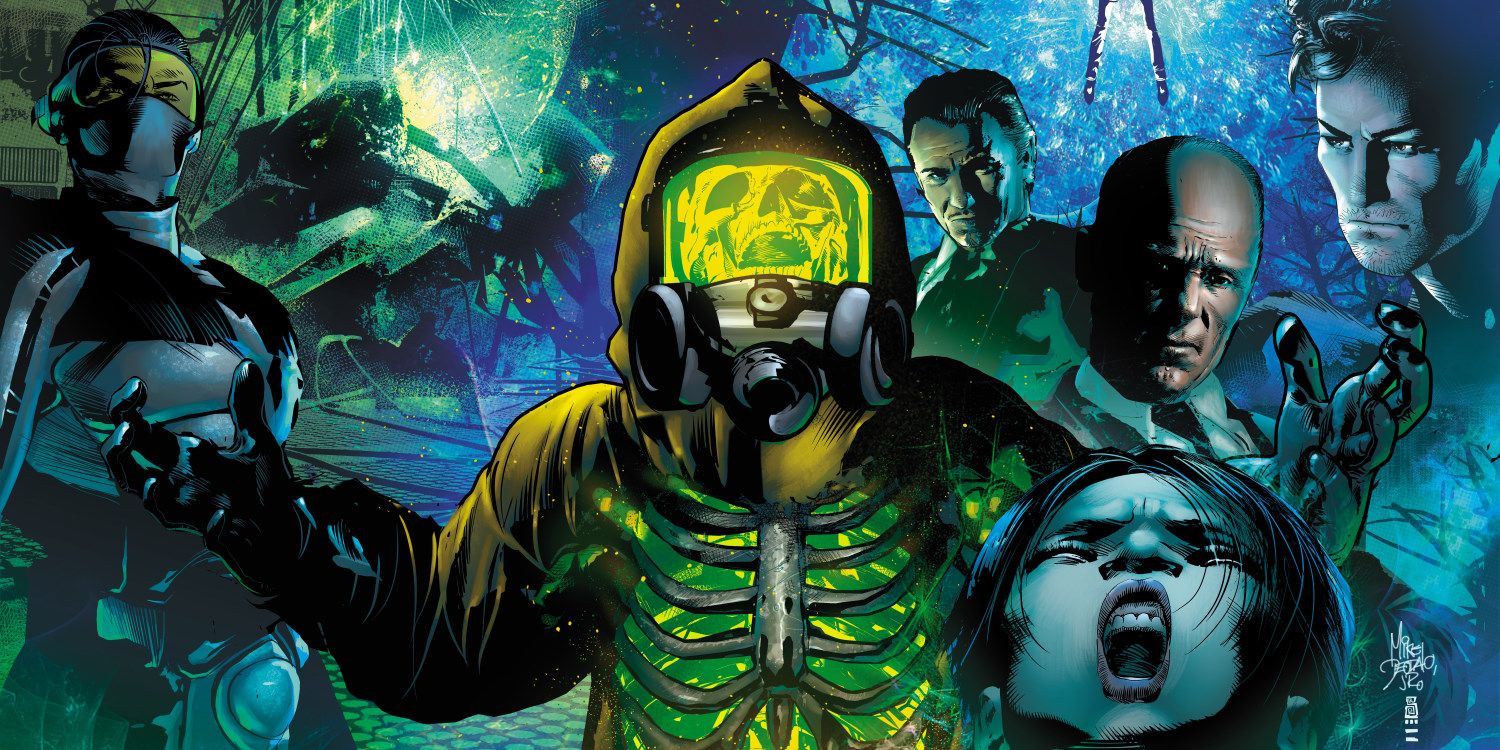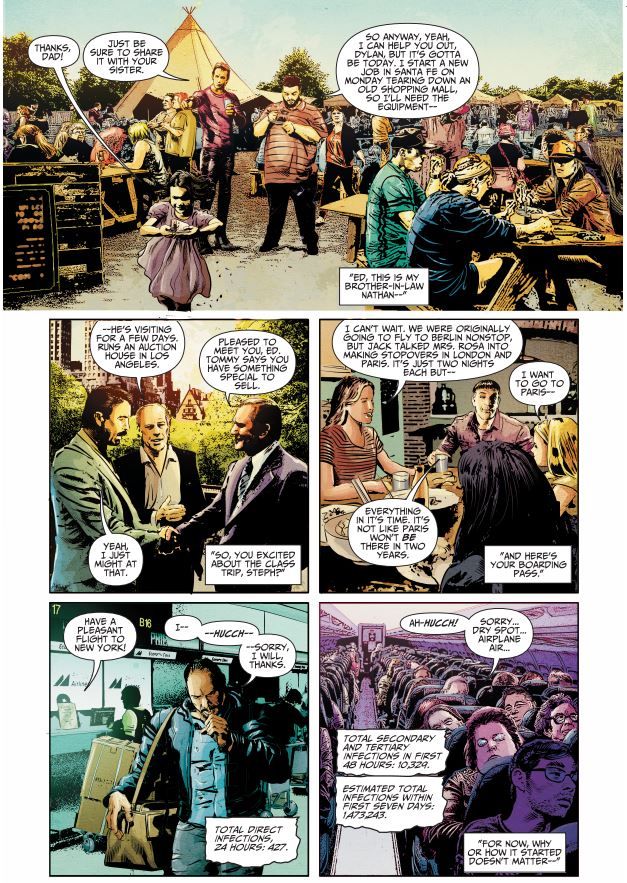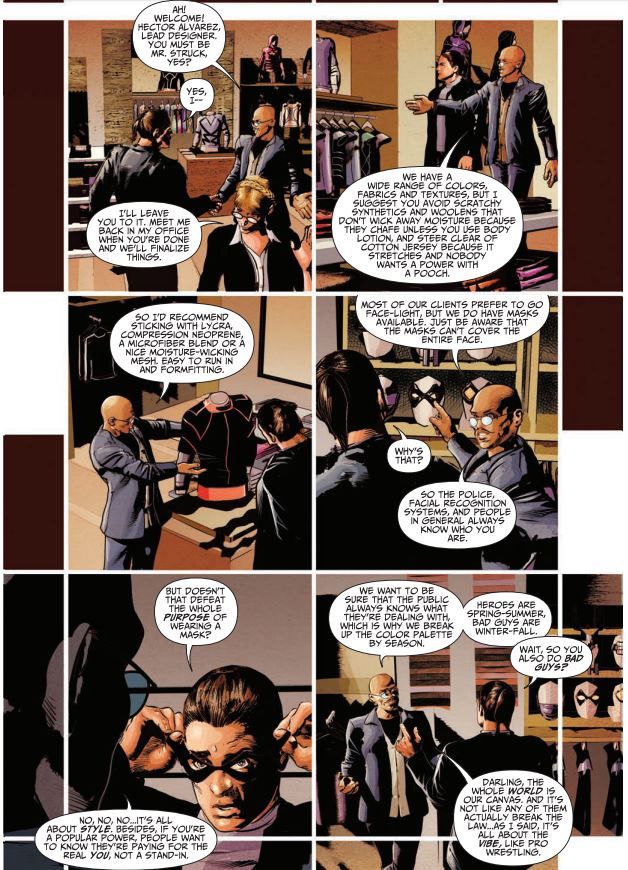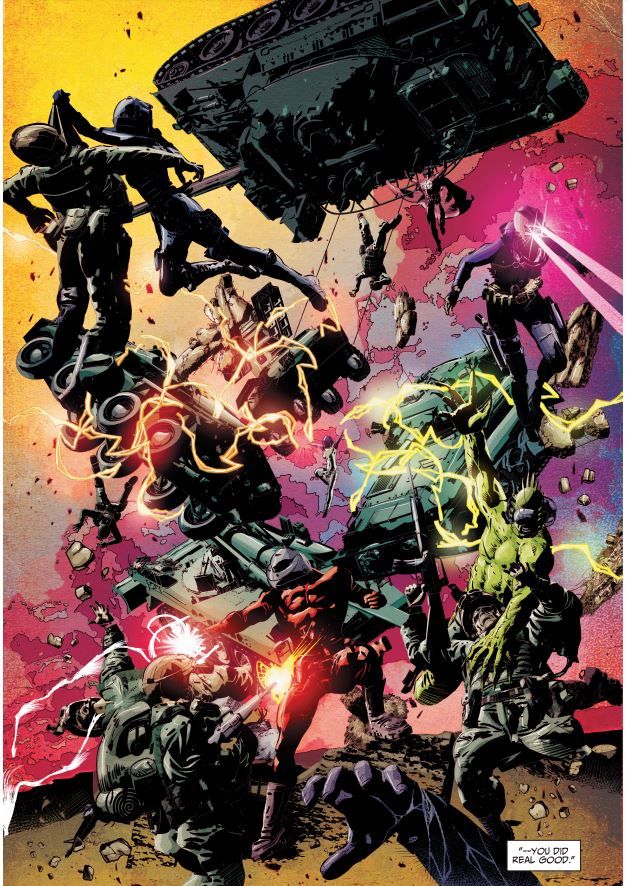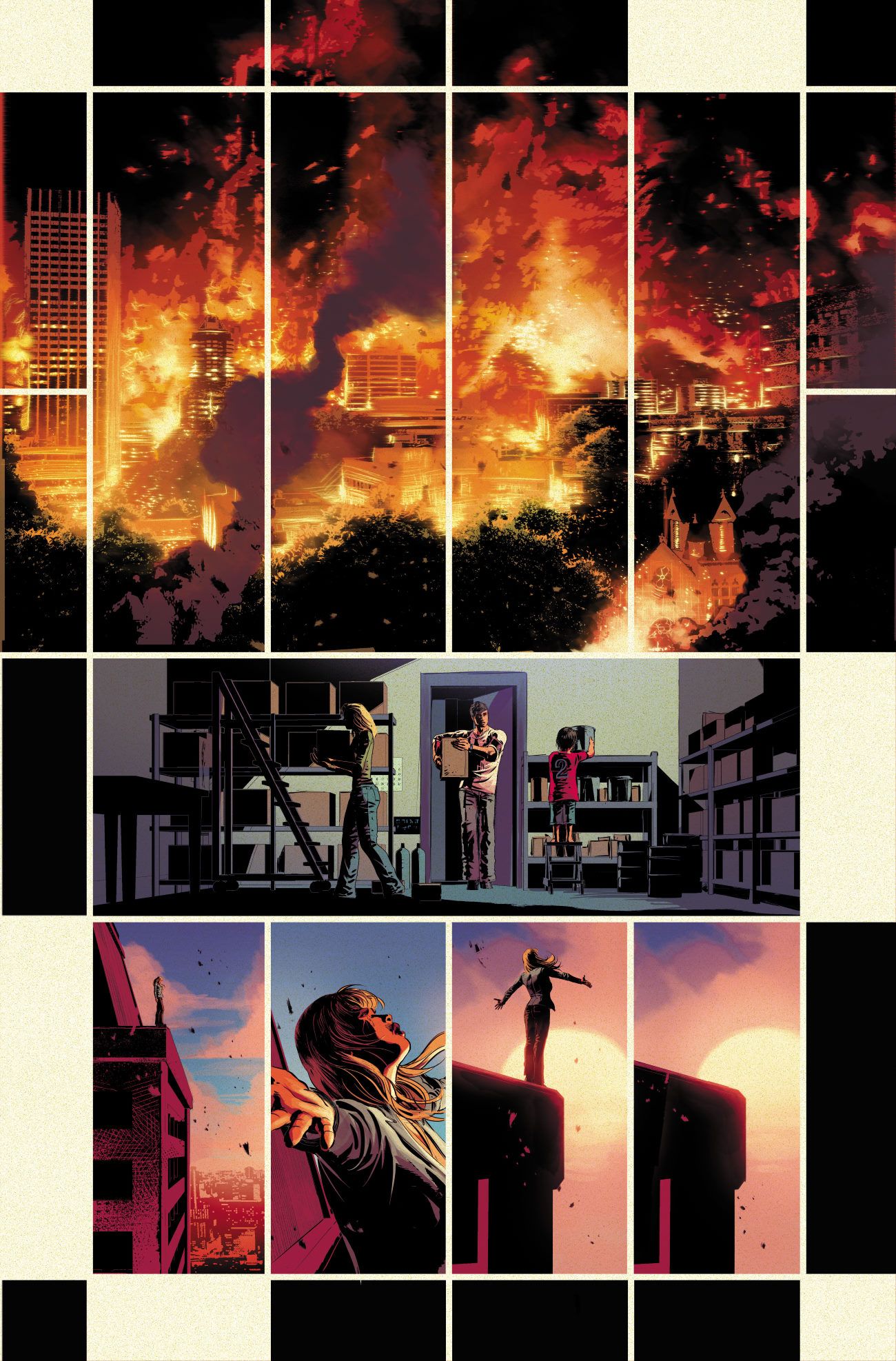Screen Rant had the opportunity to discuss The Resistance – the six-part miniseries that sets up the Upshot Universe, the first shared superhero universe of the 21st century – with its creators back in March, when both the title and the imprint it headlines were first releasing. Now that this cornerstone of brand-new publisher AWA Studios’s entire line has finished its run (its trade paperback ships today, October 7), it’s time to round up the creative team again to take stock of the accomplishments they’ve achieved.
And they are, indeed, some accomplishments. The Resistance tells the story of a global pandemic that kills scores of people, leaving both exposed racial inequalities and nationalistic tendencies in newly adapting governments in its wake – an eerily prescient setup. The main divergences from its narrative reality and the one its readers suddenly found themselves in is the presence of some 15 or 20 million superpowered survivors, who have the newfound ability to remake the world into something far better – if the suspicious authorities and political gatekeepers will allow them to, that is.
Writer Joe Michael Straczynski, artist Mike Deodato, Jr., and editor (and AWA Chief Creative Officer) Axel Alonso discuss their approach to this first “season” of this flagship narrative, leavening such a heavy arc with some humor and satire, and where the Upshot Universe goes from here. The full interview follows below:
Screen Rant: From beginning to end, The Resistance is beautifully told, and it's very easy to see how the narrative would start here and end there. Can you talk about how you guys tackled this story arc, how you decided how many issues it would be, and how much to leave for the second miniseries?
J. Michael Straczynski: The goal with the first miniseries was to put all the pieces into play and lay the groundwork for new stories by other writers – in essence, to create the universe of our story while, at the same time, telling strong, character stories. Some folks online have observed that the book is structured more like a science-fiction novel than a conventional superhero book, and I think there may be some validity to that perspective, from the scale and scope of the story to the fluidity of the narrative structure.
As for the length of the mini, a six-issue run was something Axel mentioned from the git-go.
Axel Alonso: Joe and I discussed creating a new universe born in the ashes of a global tragedy. Newly super-powered people from around the world would be born under a terrible cloud that might make them hated and feared. Without pause, he said the event that set things in motion should be a global pandemic. That’s what people are scared about now, he said, not gamma rays – and this was a year-and-a-half before covid-19. He said he needed six issues to lay the foundation for our universe, and I got the $%^$# out of his way!
For a story that was written some 18 months ago, it's remarkably prescient – everything from the pandemic to the throes of racial inequality that so consume our daily lives right now take up the majority of the spotlight in Resistance. Please tell me how much of this comes from being students of human psychology and history, and how much it still must be kinda freaky to witness.
Alonso: When I decided I wanted to create a shared universe, I knew I needed a Grand Architect. My short list had one name on it: Joe Straczynski. Based on his body of work, some of it for me, I knew he would tap into the zeitgeist, that he would create a relevant universe populated by three-dimensional characters.
Straczynski: It’s a little of both, to be honest. To have a book featuring a pandemic come out at the same time that a pandemic hits, with very similar visuals and consequences to the virus, kind of ooked me out. Ditto for some of the other themes that appear in the book that reflect current events. This has continued into volume two – in particular, issue two (planned out months ago) directly correlated to things that were happening right that minute in the streets. I wrote in the script:
“Full disclosure: I wrote these scenes before we got to where we just got, so sweartagod the parallel to [deleted for the moment] wasn't intended; this is a direct and planned follow-up to [deleted] in v2, issue 1 – this just keeps happening with this book. I don't know the name of the horse we're riding any more than you do, but we are where we are, so here we go.”
I’m a big believer in synchronicity, in the idea that when real-world events begin to line up with the story you’re telling, or the move you’re making in life, it’s a sign that you’re on the right path. If that’s true, then we are definitely going in the right direction.
Alonso: I am, too. We wanted to create a shared universe for the 21st century that was rooted in now, not then. The DC Universe characters were born in the ‘40s and ‘50s. The Marvel characters were born in the ‘60s and ‘70s. Where are the new superheroes that reflect the hopes, dreams, and fears of today?
One of the big things that jump out at me after reading the entire mini is just how much you guys play with time – the setting hops back and forth a bit, between events in different issues but also to events that predate the comic, from the backstory. On top of that, you make a couple of mentions to the upcoming Moths series (it seems like these two stories take place simultaneously), and then there's the Resistance: Reborns webcomic, to boot. What was the thinking behind this approach?
Straczynski: In part, this goes back to what I mentioned earlier about this feeling more like a science-fiction novel than a traditional comic structure. There was also a lot of ground to cover to tell the story on a truly global scale, and if done linearly, it could never fit and would feel drawn out. By flipping back and forth along the timeline, we could collapse and condense certain things and stay with the drama of the moment.
And, yes, the original plan was to have Moths #1 come out at the same time as the lead-in scene in The Resistance, but the virus kicked that idea to the curb pretty early.
Alonso: Joe had to cover a lot of ground in six issues!
Please tell me what the motivating factor was behind doing The Resistance: Reborns – and whether you have any more mini-spinoffs like this planned for the future.
Straczynski: That’s all Axel. We were talking about the one-off characters seen at the end of issue one, and he asked – I think more out of idle curiosity than anything else – if I knew their stories and where they were going. I’m one of those sorts who has to know everything, so the answer was yes. Seeing the delay caused by covid, Axel had the inspiration to break out their stories as ways to keep the book in the larger conversation when it wasn’t available in stores. I loved the challenge of writing such short pieces, and the freedom to tell them in ways that were almost like narrative haiku.
Alonso: I thought it would be cool to do a deep dive into characters we had teased in issue #1 – smaller, intimate stories, set during the “Great Death” pandemic that would serve as a preview of stories to come. Joe proposed Reborns, which tells the origin stories of five characters you get a glimpse of in The Resistance, volume one that you’ll be seeing a lot of in the future.
I can tell, Axel and Joe, that you guys had a lot of fun playing around with marketing and PR and unfettered capitalism -- in the third issue, when Jim is trying to pick out his corporate-approved costume and identity, you make mention of going "face-light" (read: maskless) or the moniker of "X" being unavailable. It's fun, but it also speaks to how reflective of the real world Resistance tends to be, both economically and politically.
Alonso: I loved that issue! Got me thinking what superhero name and costume I would pick.
Straczynski: Comics can sometimes be terribly serious, and putting something lighthearted into the mix that kind of pokes at some of the superhero tropes we’ve just come to accept as part of that milieu was just a lot of fun to write. Given the density of the miniseries, breaking it up with something amusing seemed smart as a way to cleanse the palette before bringing on the impact of the last three issues.
Mike, piggybacking off of this, how difficult was it to keep the book feeling as grounded and gritty and realistic as possible, even when things start to include these fantastic Reborns who are giant or look animalistic?
Mike Deodato, Jr.: That is kind of my specialty, actually: to make the story look as realistic as possible without losing its magic or dynamism. So it wasn’t difficult at all.
I have to admit, after reading so much of AWA's (pretty diverse) selection of titles – which tends to eschew the traditional comic book tropes – it was slightly jarring to go back to Resistance's middle issues and see such traditional elements as costumes and superheroes and -villains. Given that you guys still turn these items a bit on their axis, how obligated did you feel to do at least one Upshot miniseries that more or less landed in the usual comic territory?
Straczynski: Well, pretty much all of the costume stuff is in issue three, which is the one that takes the mickey out of the whole thing, so it wasn’t really a divergence in that sense. I do think there are certain things that you have to accept when playing in this genre – if everybody is constantly running around in street clothes, it can make it hard to distinguish who’s who, especially in a big fight as we have when costumes come out for a big confrontation in Eastern Europe. So, there’s a time and a place to indulge.
Alonso: Well, I’m not sure I agree it’s “usual comics territory” that we’re mining, but I understand what you mean.
Look, superheroes are a great device to tell stories – I was Marvel editor-in-chief, so I know from experience. There’s so much you can do with them… so why wouldn’t we? It’s what you do with them that counts.
How much fun – or, I guess, how nerve-wracking – was it to have to come up with all these new costumed identities, from the names to their designs? Did you have pretty much a free hand with this, Mike?
Deodato: Total freedom. We’ve known each other for about 15 years, and Axel knows he can relax and worry about the other books after I take charge.
When can we expect to see the next big installment of the Upshot Universe that picks up on some of these narrative or thematic beats? Will it be the direct continuation that is Moths?
Straczynski: I believe that Moths is the first to pick up the threads introduced in The Resistance. I know from conversations with Axel that more are lined up behind that. Whether or not there will be a Moths v2 depends on many, many factors.
Alonso: Moths is the first to pick up the threads introduced in The Resistance, with several more coming very soon after.
The last time we spoke, Joe, you talked about "a creator-owned book for AWA that is kind of a parallel approach to the main universe." I don't suppose there are any further hints you'd like to drop about this, are there? *blinks innocently*
Straczynski: I would love to drop a whole ton of hints – at the appropriate time.
Alonso: What Joe said. It’s a big story, drawn by a very big artist. Very excited.
Mike, after Bad Mother, do you have your next AWA project lined up?
Deodato: Already working on the second issue of it, loving every second of it, but cannot talk about it right now, unfortunately.
The Resistance TPB is available now wherever comic books are sold.

